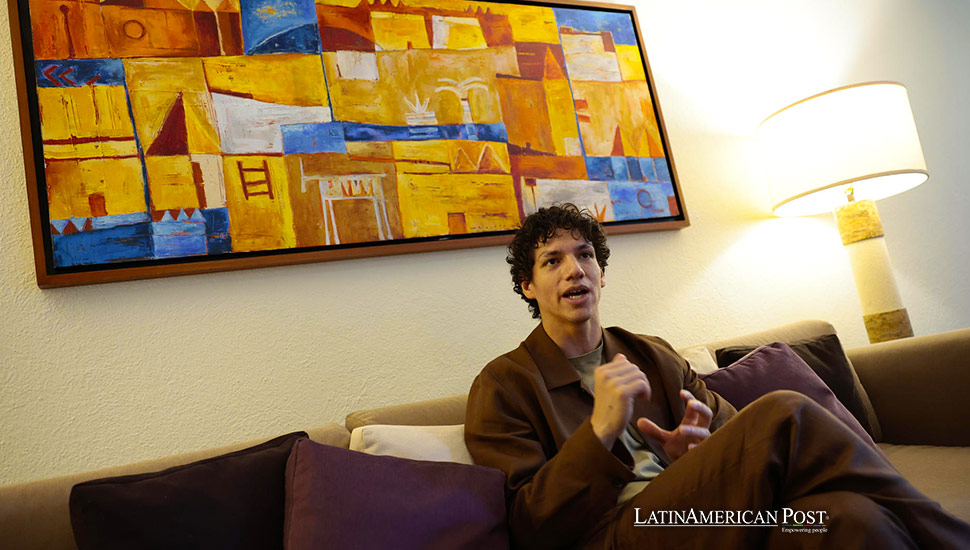“Despertares” Returns to Revolutionize Ballet in Mexico

“Despertares,” the renowned ballet showcase, returns to Mexico, featuring 50 dancers from 20 countries, demonstrating a vibrant celebration of global ballet under the leadership of world-class Mexican dancer Isaac Hernández.
After a two-year pause, the grand ballet spectacle “Despertares” triumphantly returns to Mexico, steered by Isaac Hernández, recognized globally as one of the leading figures in ballet. Set for August 23 at Mexico City’s distinguished Auditorio Nacional, this event is more than a dance performance; it’s a cultural institution bringing together approximately 50 dancers from 20 different countries, each with their unique artistic flair.
Isaac Hernández: A Ballet Prodigy’s Journey
Isaac Hernández, born into a family of dancers in 1990 in Guadalajara, Jalisco, has been intertwined with ballet since childhood. He entered the competitive ballet scene early, quickly distinguishing himself nationally and later internationally. Moving to the United States at 18, he joined the San Francisco Ballet and became a principal dancer. His career is a testament to his relentless pursuit of artistic excellence, which has led him across the globe, contributing to prestigious dance companies and eventually earning him the Benois de la Danse in 2018, marking him as one of the elite dancers worldwide.
“Despertares,” conceived by Hernández in 2011, originated from his ambition to challenge and transform the ballet landscape in Mexico. Disheartened by international ballet companies underestimating Mexican audiences, Hernández envisioned a show that would set new standards of excellence and respect for the viewers. “Growing up, I noticed a recurring theme where audiences weren’t fully respected by visiting ballet companies. They seemed to assume that there was a lack of understanding or appreciation for ballet in Mexico,” Hernández explains. “‘Despertares’ was created to counter that narrative, to showcase the best in the world right here.”
Unlike traditional ballet performances, “Despertares” offers unparalleled variety and excellence, featuring soloists and principal dancers from leading ballet companies. This format not only elevates the event to a prestigious level but also turns it into a crucial nexus for cultural exchange and artistic collaboration, reflecting the broader societal and professional shifts in Mexico’s approach to ballet.
Breaking Stereotypes, Shaping a Legacy
Hernández sees ballet as more than dance; to him, it’s a sanctuary that allows him to navigate and counteract societal biases while shaping a rewarding life. From a young age, he faced stereotypes associated with male dancers but used these challenges to strengthen his resolve and broaden his influence. “As a child, facing stereotypes about male ballet dancers was tough, but it taught me resilience and gave me a platform to inspire others to follow their passion despite societal norms,” he recounts.
The impact of Hernández and “Despertares” resonates well beyond Mexico. Across Latin America, where ballet has often been sidelined, there’s a burgeoning recognition of its cultural and artistic value. In countries like Brazil and Argentina, ballet has a robust presence, with institutions and performances regularly drawing international talent and audiences. Similarly, new dance schools and increased government support in Colombia reflect a growing appreciation for ballet’s artistry and its potential for social impact.
In Brazil, for instance, the vibrant ballet community in cities like Rio de Janeiro and São Paulo has embraced international collaborations, much like “Despertares,” bringing global ballet standards to local stages and fostering a reciprocal exchange of cultural wealth. Argentina’s Teatro Colón, one of South America’s most prominent opera houses, has a long tradition of staging world-class productions that attract global talent, further enriching the regional ballet scene.
“Despertares” has thus become a beacon for the ballet renaissance in Latin America. It not only showcases top-tier international talent but also plays a pivotal role in elevating the perception and status of ballet in the cultural spheres of the region. Hernández’s vision extends beyond mere performance; it’s about instilling a new cultural reverence for ballet, positioning it as a critical component of the artistic dialogue across Latin America.
Also read: Mexica Pre-Columbian Legacy and Splendor Unveiled in Paris
As the curtain rises again on “Despertares,” it symbolizes more than a night of exceptional ballet—it represents Latin American ballet’s ongoing evolution and potential to inspire, transform, and lead on the global stage. Hernández and “Despertares” are not just entertaining; they are pioneering a movement where passion, dedication, and international cooperation illuminate the path toward a flourishing artistic future.




